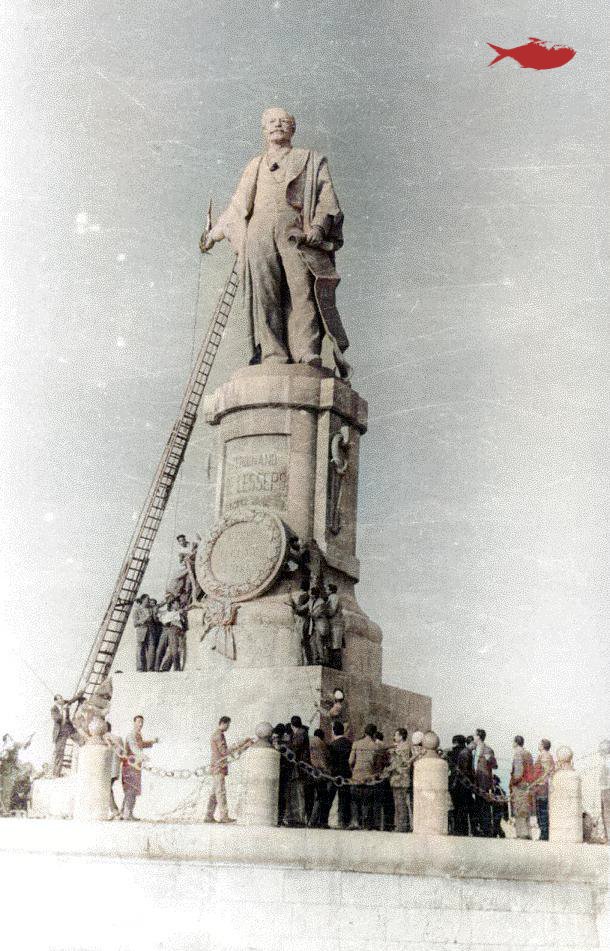
26 July 1956,
Egyptian President Gamal Adbel Nasser nationalised the Fire Canal, a strategic point linking the Mediterranean with the Red Sea. Egyptians and Arabs in general welcomed this sovereign decision, but at the same time it was a challenge for the British and French who had until then been in control of the canal. Since its opening in 1869 it was in the hands of these.
In his speech in Alexandria, Nasser expressly mentioned the name of the French Ferdinand de Lesseps, allegedly the principal promoter of the channel. With this name he told the Egyptian military in the code that he took control of the canal and nationalized it. A few days after the demolition of the statue of De Lesseps.

The fire channel was built between 1859 and 1869 and stands out among the engineering works of the world. De Lesseps is one of the French national heroes. The canal was built by 1.5 million workers, many forced without any compensation and living in very precarious conditions. Records from the Library of Alexandria show that dysentery, smallpox, tuberculosis, hepatitis and cholera were common diseases among these workers, “and the latter was so deadly in 1865 that there were not enough men to carry the corpses.”
According to Egyptian historians, nearly 100,000 people died during this 10-year work.
The nationalisation of the channel directly affected political life in the Middle East and in October the British, French and Israeli attacked Egypt.